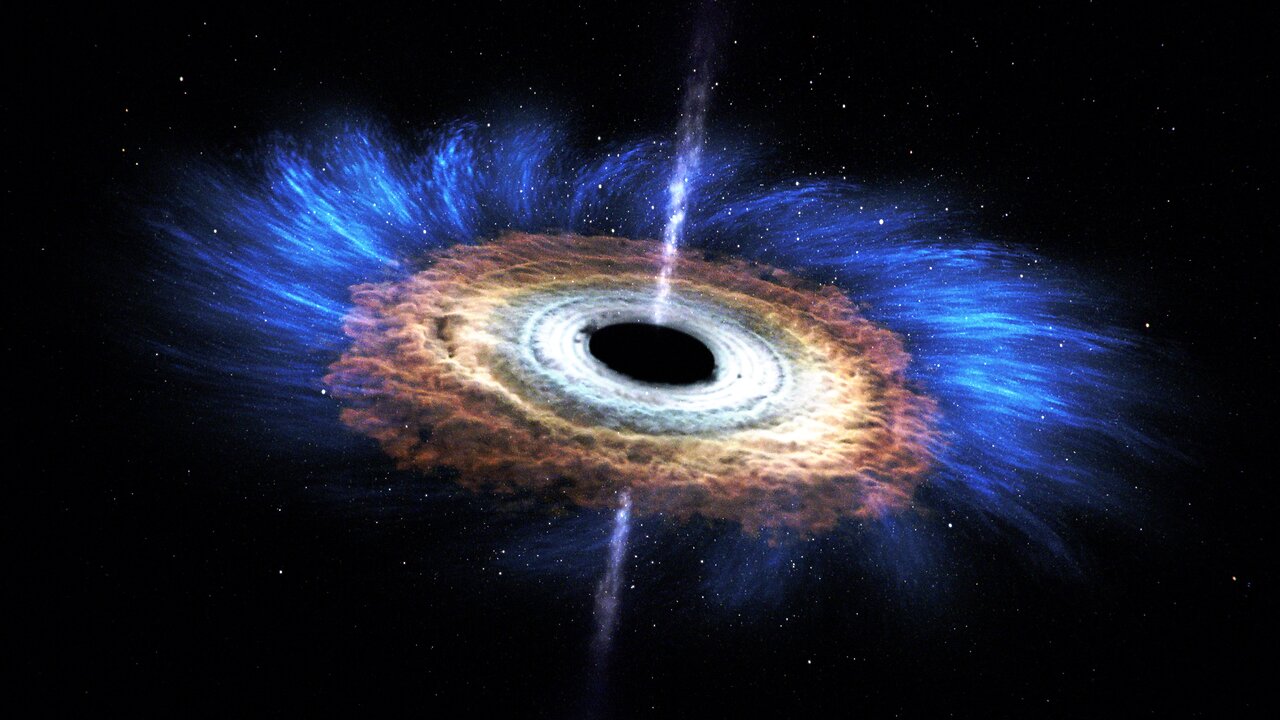Premium Only Content

Cosmic Drama Unveiled: When Black Holes Shred Stars
In this visual representation, we explore a remarkable cosmic phenomenon: when a star ventures too close to a black hole, the gravitational forces at play are so powerful that they tear the star apart. This extraordinary event, known as a "tidal disruption," unfolds in a dramatic manner. As the star gets too close to the black hole, it undergoes a process where some of its shattered remains are catapulted outward at incredibly high speeds, while the rest gets inexorably drawn towards the insatiable gravitational pull of the black hole. This dynamic interaction results in a unique X-ray flare that can persist for several years.
To unravel the mysteries surrounding such events, NASA's Chandra X-ray Observatory, the Swift Gamma-ray Burst Explorer, and ESA/NASA's XMM-Newton spacecraft have come together, each contributing essential pieces to the cosmic puzzle. Their combined efforts shed light on a particular tidal disruption event called ASASSN-14li. This event was initially discovered through an optical survey conducted by the All-Sky Automated Survey for Supernovae (ASAS-SN) back in November 2014. ASASSN-14li unfolded in the vicinity of a supermassive black hole, which is estimated to possess a mass several million times greater than that of our Sun. This cosmic drama played out within the heart of PGC 043234, a distant galaxy located approximately 290 million light-years away.
Astronomers are eagerly searching for more occurrences akin to ASASSN-14li. These events serve as critical testing grounds for theoretical models, allowing scientists to gain deeper insights into how black holes influence their surrounding environments.
During the course of a tidal disruption event, slender strands containing a significant portion of the star's mass plunge toward the black hole. Over time, these gaseous strands converge into a seamless, scorching-hot disk that radiates with intense X-rays. As this disk takes shape, its central region becomes extraordinarily heated, leading to the emergence of a powerful outflow of material known as a "wind," which streams away from the disk.
Credits
NASA's Goddard Space Flight Center.
Brian Monroe (USRA): Lead Animator
Scott Wiessinger (USRA): Lead Producer
Francis Reddy (Syneren Technologies): Lead Writer
Jon Miller (University of Michigan): Lead Scientist
-
 13:17
13:17
AndresRestart
17 hours agoThis Mario Galaxy 2 Remaster Is Better Than We Thought!
3.64K4 -
 59:16
59:16
CarlCrusher
10 hours agoAncient Psionic UFO Contact in Skinwalker Territory with Vetted & WHY Files - Ep 3
1.96K -
 25:17
25:17
Esports Awards
16 hours agoFrom Gamer to CEO: Cherrygumms’ Journey in Esports | Origins Podcast #29
191 -
 20:08
20:08
Professor Gerdes Explains 🇺🇦
16 hours agoThe Polish Drone Strike was a Russian PSYOP
173 -
 5:57
5:57
Breaking Points
18 hours agoJudge DROPS Terrorism Charge Against Luigi
5.59K2 -
 2:17:45
2:17:45
Side Scrollers Podcast
19 hours agoDestiny & Hasan in “Deep Trouble” + Legal Mindset on Charlie Kirk Firings + More | Side Scrollers
24.2K16 -
 55:35
55:35
Dialogue works
23 hours ago $0.25 earnedJohn Helmer: The Moves Russia Is Making to OUTMANEUVER NATO
3.11K7 -
 36:25
36:25
Actual Justice Warrior
1 day agoAna RAGES At Destiny
30.3K20 -
 28:35
28:35
itsSeanDaniel
2 days ago"BBC is Lying" - British Patriot REVEALS THE TRUTH about Historic London Rally
13K21 -
 26:13
26:13
The Brett Cooper Show
2 days ago $4.45 earnedThe Dark Truth Behind Child Acting | Episode 65
79K21